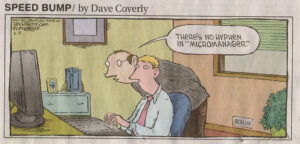Although “who you know” will most likely be the way you get your next opportunity, your resume remains a key document to your success. It needs to be attention-grabbing, and it needs to keep the interest of the reader and it must contain key search words and phrases to get through the Applicant Tracking System (ATS). It also needs to be consistent with your LinkedIn® profile.
You Need Two Styles of Resumes
You should have two styles of your resume. One is a plain text resume that is formatted in a clean, black & white non-descript way… no bullet points, graphs, or tables. This is the format that is used when applying online to allow for the ATS to easily “read” it and to glean it for key words and phrases. If you don’t use this style for this purpose, your resume will likely be discarded without review. You should also have a more physically attractive resume, with the same content, to be presented to interviewers.
Personal Summary
The first thing on your resume should be a “Personal Summary “. This is one or two sentences that highlight your qualifications for a job. This should be customized for each role you apply for. It should describe who you are, what you do and it should also have a forward looking element to it. Unlike a “Personal Objective”, it is about what you can do for a company versus what you are looking for in your next opportunity. The personal objective is also old fashioned and can be a reflection of age.
Consider the personal summary as a thesis of sorts that tells the reader what you’ve done that qualifies you for the role. It should be followed by 2-3 bullet points of recognitions and/or accomplishments that serve to “prove” your summary and keep the reader’s interest.
Two Types of Statements
There are two types of statements that your resume should contain for each job listed. First is the “Responsibility Statement”. The responsibility statement is just that… a description of the responsibilities of the job. Like a job description, it objectively describes the role and what was expected of you in that position. There is no subjectivity, it is straightforward, and it tells the reader about the skills and experiences you have from that role. It could read like “Responsible for managing the budget and forecasting process of this Fortune 50 company”.
The second statement type is the “Accomplishment Statement”. These statements describe the outcome of your work and should contain as many data points and results as possible. Simply stating that you were responsible to do a task does not tell the reader how well you did it or whether you even did it at all. An example of this kind of statement is “Reduced the budgetary and forecasting process from 5-days to 2-days by collaborating with key stakeholders and instituting new reporting standards and procedures cross company”.
One way to “test” your resume to ensure you are using accomplishment statements is to ask of each line, “can anyone write this or is it unique to me?” If the answer is the former, then it’s probably a responsibility statement. If it’s the latter, then it is likely an accomplishment statement.
Don’t Leave it to Chance
Your resume is one of the most important and impactful pieces for you to communicate the value you can bring to a company. It needs to be powerful and it needs to clearly communicate not only what you’ve done in the past, but how well you’ve done it too. Take the time to get it right and customize it for each job you apply for. Don’t do it in a vacuum. It is always best to get objective opinions and assistance from others, whether it’s a mentor or a coach, to ensure you are putting the best, most powerful message forward that you can.




